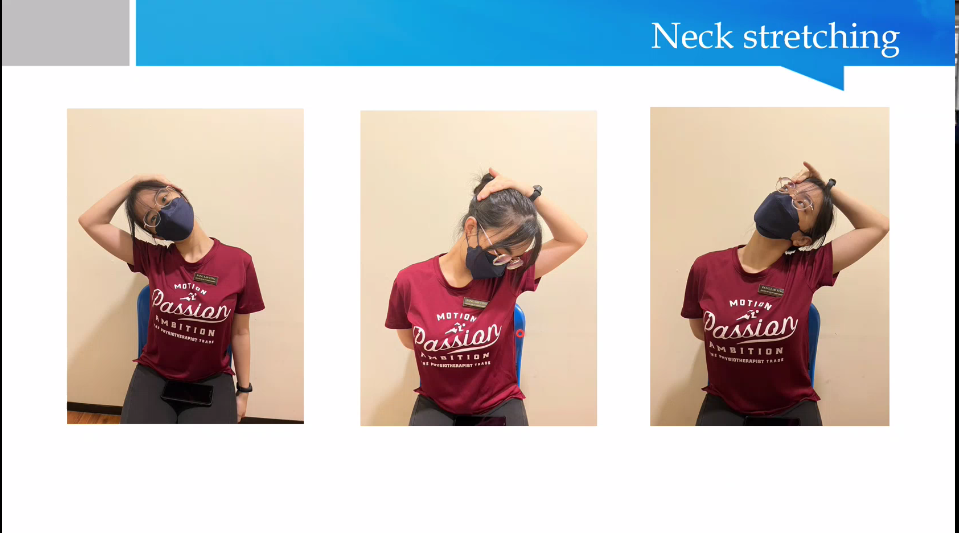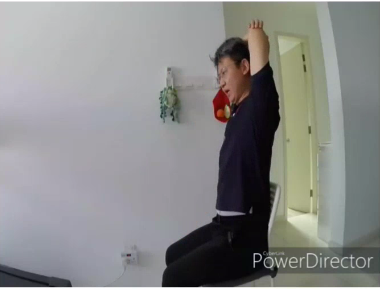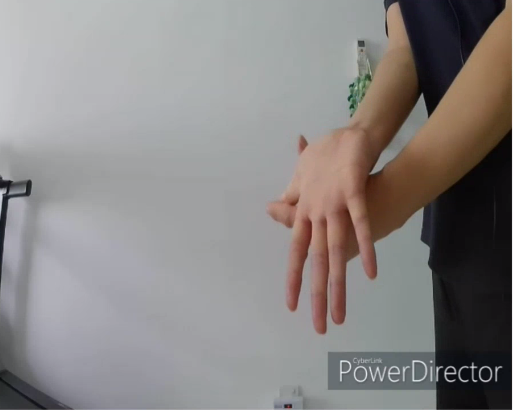
Understanding ergonomics for e-gadgets

Wong during the webinar
The Occupational Safety and Health (OSH) Committee of UTAR Centre for Foundation Studies (CFS) organised a webinar titled Workstation Ergonomic, E-gadgets Usage and Health on 20 July 2022 via Microsoft Teams.
The invited speaker was FMHS Department of Physiotherapy lecturer Wong Che Loong. The talk was moderated by Centre for Foundation Studies lecturer Cynthia Choo Pei Yi.
The webinar aimed to raise the participants’ awareness of common work-related injuries and the causative factors whilst providing a platform for participants to learn proper ergonomics in the usage of e-gadgets to prevent Musculoskeletal Disorders (MSD).

Wong explaining Carpal tunnel syndrome
Wong started his talk by explaining common work-related injuries related to the usage of e-gadgets, “Tension headache, migraine, neck pain, shoulder pain, arm pain, forearm pain, wrist pain and hand pain are common injuries faced by those people who work with e-gadgets for a long period. Using smartphone for more than five minutes will significantly reduce the repositioning ability of the neck. Low back pain and repositioning defects of the low back are positively related to prolonged usage of computers. MSD is prevalent among people who work with less frequent rest.”
He further explained, “The usage of e-gadgets for more than three hours per day may lead to visual problems; for instance, dry eyes and burning pain at the back of the eye which can interrupt computer work frequently. Insomnia and respiratory function impairment are also found to be pervasive among people who work with e-gadget for long periods.”




Wong showing participants some stretching exercises
He then moved on to talk about ergonomics principles in the usage of e-gadgets at the workplace. “Improvisation of work postures is important to reduce the symptoms of low back pain. So, adjust the top of the monitor to be aligned with your eye level and your eyes should look straight ahead to the monitor. The monitor should be 18 to 24 inches away from the person and their chair and desk should be adjustable. The keyboard and mouse should be placed at the same level and use keyboard wrist rest to prevent carpal tunnel syndrome,” said Wong.
He also highlighted that the habit of exercising could help lessen the occurrence of MSD. Speaking of exercise, Wong demonstrated some exercise routines to the participants, namely stretching exercise, mobilisation exercise and lower limb circulatory exercise.

Wong (second row, middle) with participants
The insightful talk then saw an active interaction between the speakers and the participants and it concluded with group photograph sessions.
© 2022 UNIVERSITI TUNKU ABDUL RAHMAN DU012(A).
Wholly owned by UTAR Education Foundation (200201010564(578227-M)) LEGAL STATEMENT TERM OF USAGE PRIVACY NOTICE